The phrase serious literature comes with an unfortunate double meaning. When we call books serious, we mean they are satisfying, well written, and worthy of consideration. But we also use serious as an antonym for funny, which can mislead us into assuming that a good book shouldn’t make us laugh. That’s too bad, because humor is a bona fide literary effect, right up there with tragedy, suspense, and profundity—just as much a part of the author’s toolbox but a lot harder to fake.
Let’s be honest: What passes for funny in book marketing falls beneath the standard just about everywhere else. The number of published works that say “Hilarious!” on their cover but turn out to be merely quirky—or the dreaded wacky—is enough to make a reader cynical. The sense of desolation is deepened by the “humor” genre of commercial publishing, in which comedians and influencers monetize audiences they built on television or social media. Many of these books are entertaining, but they tend to prioritize individual gags over sustained effect in a way that crowds out all the other pleasures the reader might be looking for.
Admittedly, this problem seems inherent to the form. Most people who identify as funny learn to make people laugh in the short term, at the level of quips and retorts; to come up with a humorous turn of events is another thing. Memoirs and nonfiction expand this dilemma: If it’s hard to think of amusing plot points, then convincing the reader that real life is funny requires a borderline metaphysical power to shift perception. We might therefore conclude, after being advised for the umpteenth time to read John Kennedy Toole’s execrable A Confederacy of Dunces, that funny literature is a contradiction in terms. It is true that such books are hard to find—but they are out there, and I have recommended some here.
The Code of the Woosters, by P. G. Wodehouse
Wodehouse is often cited as one of the great sentence-level writers in English literature, but he made his reputation during his lifetime by putting together clockwork plots. The Code of the Woosters is a Swiss watch. Dispatched by his aunt to the country estate of Sir Watkyn Bassett with instructions to steal a certain piece of antique tableware, the wealthy fool Bertram Wooster takes it upon himself to repair the broken engagement between his old school chum and Sir Watkyn’s daughter, all while dodging one Roderick Spode, a parody of the English fascist Sir Oswald Mosley. Bertram’s genius butler, Jeeves, provides him with a steady drip of schemes to navigate this obstacle course, but their deceptions—and the at most intermittent competence with which Bertie executes them—keep getting him in deeper and deeper trouble. This 1938 novel combines old-fashioned dramatic irony with the conventions of farce to produce a high-water mark in Wodehouse’s Jeeves series.


The Sellout, by Paul Beatty
In this satire of American race relations, Beatty makes comedy out of one of the most serious topics imaginable—a project he took on because, according to an interview in Rolling Stone, he “was broke.” The Sellout begins with the narrator, a Black farmer in the suburb of Dickens, California, appearing before the Supreme Court for bringing back segregation and slavery. How did he get there? One thing led to another. After his sociologist father is shot by police, the narrator inherits both his land and his informal role in the community: talking his neighbors out of bad ideas. He does not rise to the occasion, starting a segregated bus so that his friend can live out his fantasy of giving up his seat to a white woman, and then, after crime on the bus mysteriously vanishes, agreeing to expand the program to the local school. Beatty’s narrator isn’t an Uncle Tom figure or the “sellout” he is accused of being so much as a comfortable guy who has concluded that racism isn’t much of a problem anymore. The book’s lesson is not easily distilled, and Beatty relentlessly complicates it in ways that evoke the old maxim: It’s funny because it’s true.

Good Gossip, by Jacqueline Carey
This collection of interconnected short stories is set in late-1980s Manhattan, a done-to-death milieu that Carey revives with metered doses of irony. As controlled and closely observed as the best naturalist fiction, it treats the world of illegal sublets and trivial social distinctions with the light touch and wary empathy it deserves, making something comic out of material that many of Carey’s contemporaries sabotaged themselves trying to make profound. The stories are about, as the narrator puts it, people like her: everyone in New York “if … you took away the guys” and “the people who didn’t know normal things, like the shape of Florida,” and all the others who somehow fail to be like “me and my friend Liz.” Here is the narcissism of small differences, as an occasion not for contempt but for love. Carey’s husband, Ian Frazier, is better known, but she has accomplished something more difficult, threading the needle between capital-R realism and the kind of book you can enjoy as much as you appreciate.
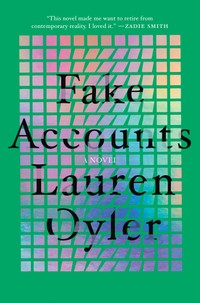
Fake Accounts, by Lauren Oyler
This novel by my favorite living essayist starts with a tragedy and ends somewhere more ambivalent. After the narrator’s boyfriend dies, she moves to Berlin and has a series of Young Writer–type experiences, such as drinking beer with other expats, going on internet dates, and taking conscientious but wage-appropriate care of other people’s children. Oyler makes this series of nonevents work by bringing a second layer of consciousness to the material—a suspicion of her own knowingness that captures the muddled project of curating yourself, of trying to be someone on purpose. The narrator reacts to her boyfriend’s death with a kind of guilty relief: It resolves all the tensions in their relationship without her having to do anything. But realizing that introduces a whole new set of problems. Oyler makes it funny by allowing her fictional stand-in to look petty, vain, and selfish—like a real person.

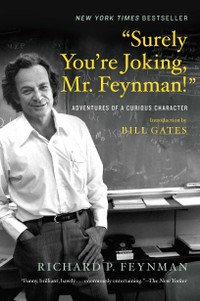
Surely You’re Joking, Mr. Feynman!, by Richard Feynman
Oh, for the days when famous scientists wrote amusing books instead of going on Twitter to correct the rest of us! Feynman won the Nobel Prize in physics and helped determine why the space shuttle Challenger exploded; he also came from working-class Queens and spoke with an accent so thick that many of his peers accused him of putting it on. This episodic memoir, which ranges from his childhood in Far Rockaway to his work on the Manhattan Project to his life as a charmingly unreluctant public figure, keeps returning to one central theme: how funny it is to act dumb when you are in fact really, really smart. In a letter turning down an offer from the University of Chicago, he explains that the salary is so high, he would finally be able to afford a mistress, which would complicate his life to the point that he could no longer concentrate on physics. This kind of self-deprecation evokes Feynman’s first principle of science: “That you must not fool yourself—and you are the easiest person to fool.” Watching one of the greatest minds of the 20th century proceed as though he were a blockhead is an inspiration to those of us who will not be advancing the field of quantum mechanics anytime soon.

By Richard P. Feynman
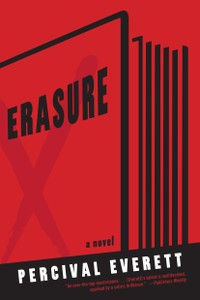
Erasure, by Percival Everett
Since the vaudeville era and the early days of Hollywood, ethnic minorities have defined American comedy on stage and screen, but the publishing industry seems to prefer that writers of color present themselves as the subjects of grim generational trauma. In Erasure, Everett goes straight at this limiting convention with a bitterness so evident that the reader cannot help but laugh. The English-professor protagonist, enraged by the success of his peer Juanita Mae Jenkins’s novel We’s Lives in Da Ghetto and goaded by his agent’s complaint that his own writing is not “Black” enough, writes a book whose working title is My Pafology. He eventually changes it to Fuck. The full text of this fictional novel appears within the book, giving us both Everett’s parody of Black literature that panders to white audiences and his idea of what would happen if that parody were unleashed upon the world: First the author is ashamed, then he gets a bunch of money, and then he wins an award. Erasure suggests that the best time to write something funny is when you’re so angry that a laser is about to shoot out of your mouth.

A Night Without Armor II: The Revenge, by Beau Sia
The modern poem seems to refuse to be funny on abstract principle: For every James Tate, there are a dozen turtlenecked postformalists intent on having no fun at all. Sia is not that kind of poet. A luminary of the tragically unhip but extremely fun New York City slam scene, he wrote ANWA II in response to the best-selling and deeply not good collection A Night Without Armor, by the pop singer Jewel. (The legend is that he did it in four hours.) Sia meticulously tracks Jewel’s book, using her titles as jumping-off points for his own verse, replacing the illustrations with crude pencil drawings and re-creating the original cover design, in which the author looks sad on a field of handwritten, painfully earnest lines (“I die on the page every time / What do you know about push-ups?”). There are definitely moments in this collection when he prioritizes the dick joke over the metaphysical conceit, but it reminds us that poetry can be vital and messy.
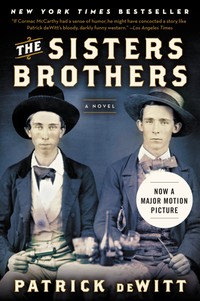
The Sisters Brothers, by Patrick deWitt
This Western, narrated by the fatter and more sensitive of two brothers working as hired killers, starts with a rapturous description of the cool brother’s new horse: how strong and steady it is, its physical beauty and preternatural speed. The narrator juxtaposes this Cormac McCarthy–esque prose with the observation “My new horse was called Tub.” This kind of deadpan humor buoys deWitt’s novel without ever sinking to parody, making it a rare instance of a genre comedy that doesn’t break the frame. Charlie and Eli Sisters are dispatched to find a chemist who has discovered a mysterious and valuable formula. One a sociopath and the other just moody, the brothers travel across a 19th-century West that is comic and tragic by turns, searching for one fortune and finding another. The novel is an audience-seeking missile, combining the danger and forward momentum of pulp Westerns with a literary yearning for beauty and decency.

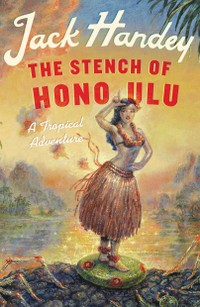
The Stench of Honolulu, by Jack Handey
Handey’s best-known contribution to American letters remains his “Deep Thoughts” sketches on ’90s episodes of Saturday Night Live, but the man who wrote “Unfrozen Caveman Lawyer” works surprisingly well in prose. This intensely stupid, deeply wonderful comic novel is narrated by a frenzied dolt who presents Hawaii as a land of savagery. Handey manages to wield his comedic genius without breaking the boundaries of his narrator’s distorted worldview, so the tale is relayed with a potent combination of unearned confidence and complete ignorance. The book begins, “When my friend Don suggested we go on a trip to the South Seas together, and offered to pay for the whole thing, I thought, Fine, but what’s in it for me?” That’s about the register we’re working in, here: at once moronic and efficient. The density of jokes is Airplane!-level high, but Handey achieves a success rate unequaled in written comedy.

By Jack Handey
When you buy a book using a link on this page, we receive a commission. Thank you for supporting The Atlantic.

